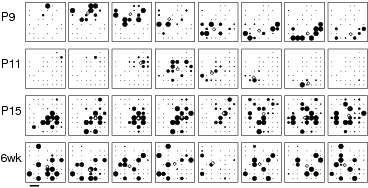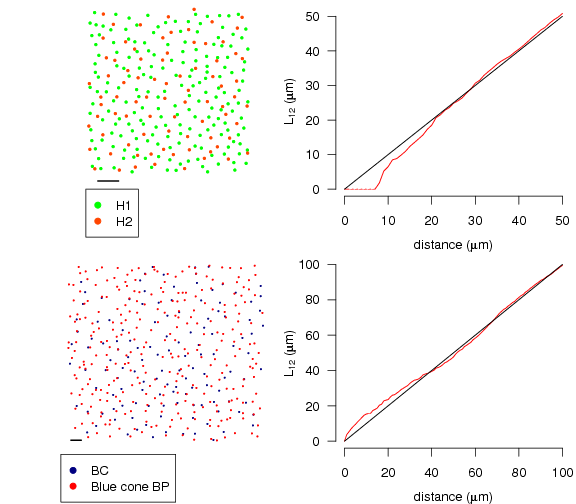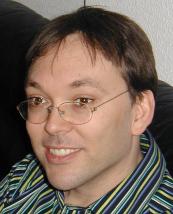Research interests
My main interests are in the development of the nervous system. I use
computational techniques to analyse experimental data and create
models of how the nervous system develops. I currently focus on
the retina as a model system for understanding neural
development. The hope is that principles learnt from the retina
will apply to other parts of the nervous system.
Some of the topics I study are described below.
Retinotopic map formation

Summary
Neighbouring neurons in the retina project to neighbouring parts
of their target (such as the superior colliculus in mouse).
The mechanisms underlying the development of these projections
have long been debated. There are two major classes of
mechanism:
- molecular gradients (such as those formed by Eph receptors
and the correspondding) ephrin ligands.
- activity-dependent mechanisms whereby neighbouring
neurons that fire-together, wire together.
Computational modelling has played an important role in
helping understand how these mechanisms can generate ordered
neural projections.
Retinal waves

Before the onset of vision, retinal ganglion cells are spontaneously
active, producing waves of activity across the retina. Some example
movies of these waves are available:
- The Marla Feller et al. (1996) Science paper movies.
- A comparison of experimental and simulated waves to
accompany the Marla Feller et al. (1997) Neuron paper.
- Multielectrode array and calcium imaging waves from
Annual Reviews in Neuroscience review by Rachel Wong
(1999).
- Calcium imaging of ferret retina under control and forskolin from
David Stellwagen et. al's 1999 Neuron
paper.
- Calcium imaging of developing turtle retina from Evelyne Sernagor's
J Neuroscience 2003 paper.
- Multielectrode array recordings from mouse retina in control and
dark reared retina's from Jay Demas' J
Neuroscience 2003 paper.
Evelyne
Sernagor,
Matthias
Hennig and I currently have a BBSRC grant to develop
computational tools for the visualisation and analysis of data
recorded from high-density multi-electrode arrays.
Retinal mosaics

The cell bodies of retinal neurons are distributed non-randomly
across the retina; such spatial patterns are known as "retinal
mosaics" due to the way that the cell bodies, together with their
dendrites, tile the retina. I am interested in the developmental
mechanisms that drive such spatial patterning.
Here is a fun way of looking
at tiling.
The retina
Some useful on-line starting points for looking at the retina are:
Analysis of neurophysiological data
I am one of the named investigators of
the CARMEN project. My
interest in this project is contributing methods for the
analysis of multi-electrode array recordings. Some of this work
is in collaboration with
the Genes to
Cognition project, led by Dr Seth Grant at the Sanger
Institute.


 Before the onset of vision, retinal ganglion cells are spontaneously
active, producing waves of activity across the retina. Some example
movies of these waves are available:
Before the onset of vision, retinal ganglion cells are spontaneously
active, producing waves of activity across the retina. Some example
movies of these waves are available:
